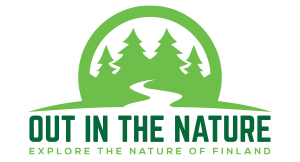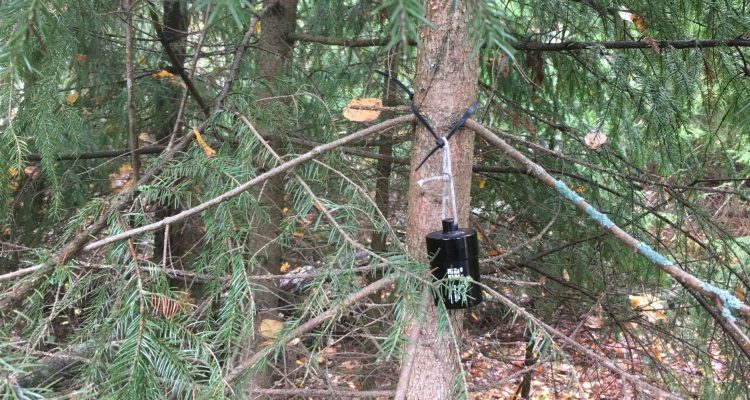I got into geocaching last year when I signed me and my nephew up to a geocaching course. My nephew loves treasure hunting, so I figured what could be better than treasure hunting out in the nature. I had a rough idea of what geocaching is, but during that course we learned a lot. While there are many geocaches in cities, I’m more into geocaching on nature trails. I’m not a fan of trying to find them and avoid people seeing me in crowded places, but in the nature you can take your time and the chances of getting caught are much slimmer.
Geocaching began in 2000 and today it is a global activity with over 3 million active caches. The best thing is that you only need a smartphone with internet connection to start geocaching. You just sign up to the geocaching website, and then you are ready to start the tresure hunting. There is a premium version of the geocaching app, which shows you more caches than the free version. I invested in the premium version for myself, but I’m still able to log my nephew’s premium finds with laptop.
Basics of geocaching in Finland
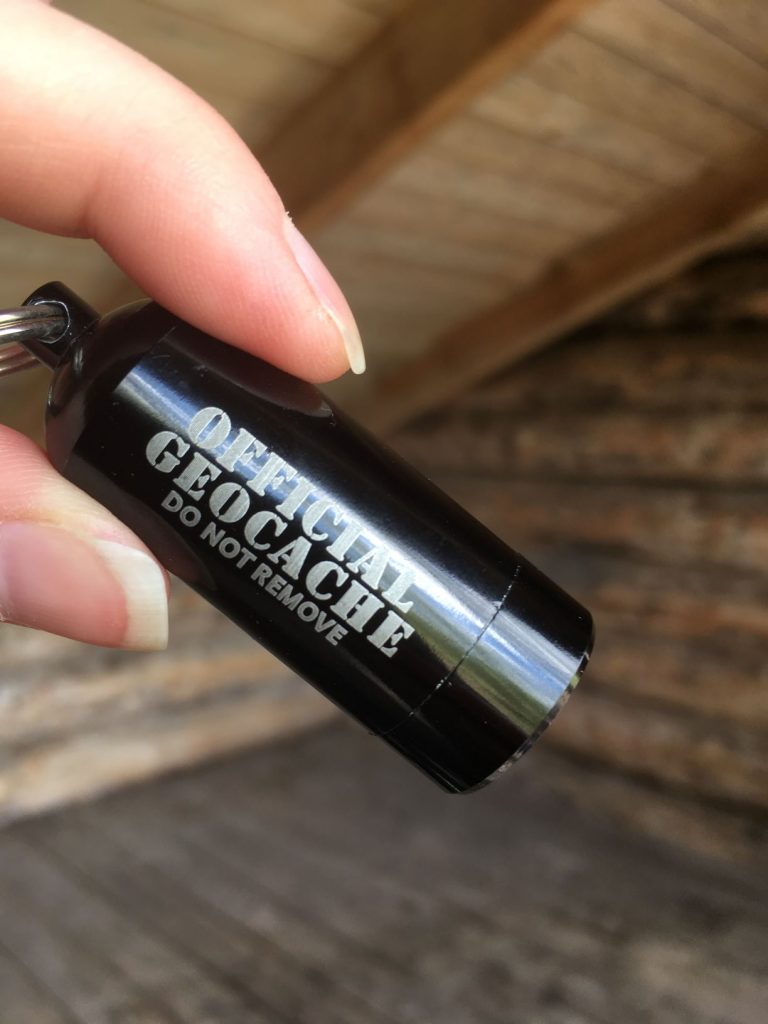
There is a corporation behind geocaching. It’s called Groundspeak and it’s headquartered in Seattle. The fees from premium memberships and the sales of official geocaching merchandise go to Groundspeak. Anyone can place a new cache, but volunteering admins approve the geocaches before they are published, and they also remove the ones that are not maintained anymore. That is how geocaching remains active and interesting.
There are different types of geocaches and they are rated from 1 to 5 based on difficulty and terrain. Most difficult caches are on islands, in the water or hanging somewhere where you need to climb. The most common cache types in Finland are traditional, multi-cache, mystery, virtual, and earth caches. Multi-cache means that you need to find several clues before the actual cache. To be able to find a mystery cache you usually need to solve a clue, which can be a set of questions, a calculation or a riddle. In virtual caches you may need to prove your presense at the location virtually, by picture or answering a question. Earth caches usually teach a science lesson. Caches are also different sizes varying from micro, small, medium/regular, large, or other.
To make geocaching more interesting, there are also trackables with different features travelling around, and you can get souvenier stamps from finding different kinds of caches or caches in different countries. Some caches include little toys that can be traded to similar toys. This is an interesting aspect especially for the kids. Geocachers also organize events to meet up.
Geocaching in Finland introduces nature destinations
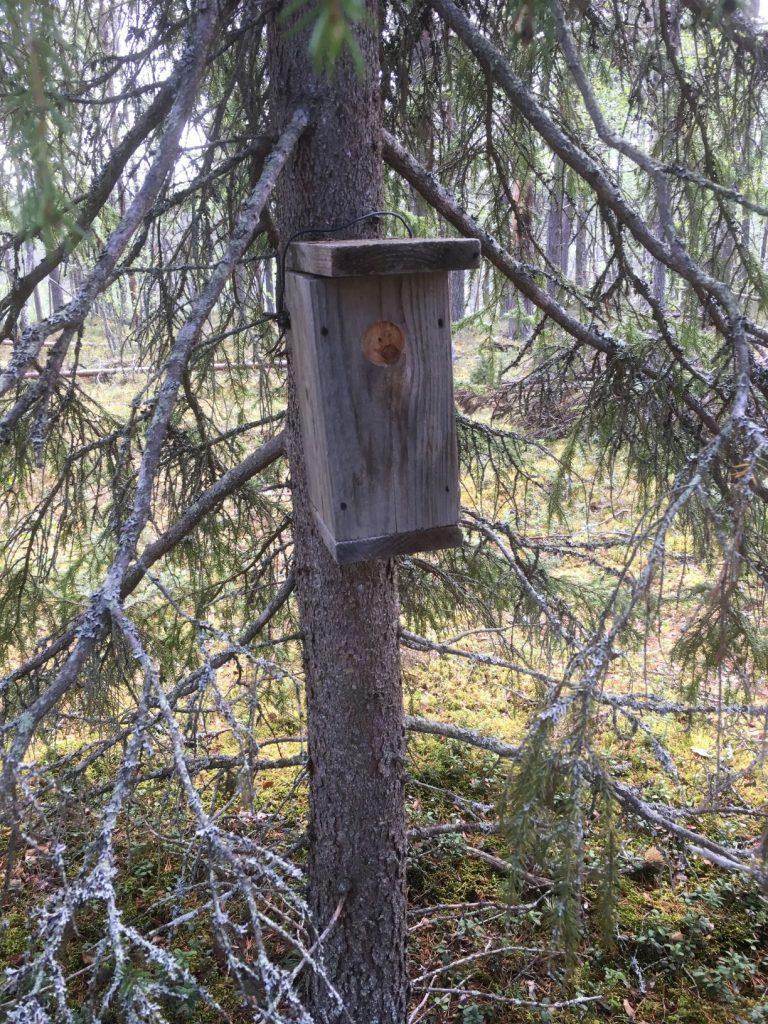
Geocaching in Finland is cool because it can lead you to beautiful locations in the nature. I would venture to say that the most amazing nature destinations in Finland have geocaches near them. You can often find geocaches in lean-to shelters, along scenic nature trails, or near any nature sights. The description of the geocache is supposed to include information of that particular area and the sight, so geocaching can also be very educational.
“When you go to hide a geocache, think of the reason you are bringing people to that spot. If the only reason is for the geocache, then find a better spot.”
briansnat, Charter Member
Winter brings an interesting challenge to geocaching in Finland and often caches that are on the ground are marked with attribute “not available in winter”. But you should note that digging holes in the ground for geocaches is not allowed, and you also don’t need to dig holes to find them. Geocaches should not disturb the nature in any way.
Unfortunately some cache makers in Finland do not translate cache descriptions into English, but you should be able to get an idea of cache’s description by Google translator. And some people volunteer as translators in the geocaching community. Geocaching also has its own lingo, also in Finnish. After finding each cache you need to comment something (but nothing too revealing) to the cache’s site, and geocaching lingo is often used. For example TFTC (Thanks for the Cache) is KK (Kiitos Kätköstä) in Finnish.
We have included a category for geocaching in our website for posts that mention geocaching. But that certainly doesn’t mean that other nature destinations that we write about wouldn’t include any geocaches.
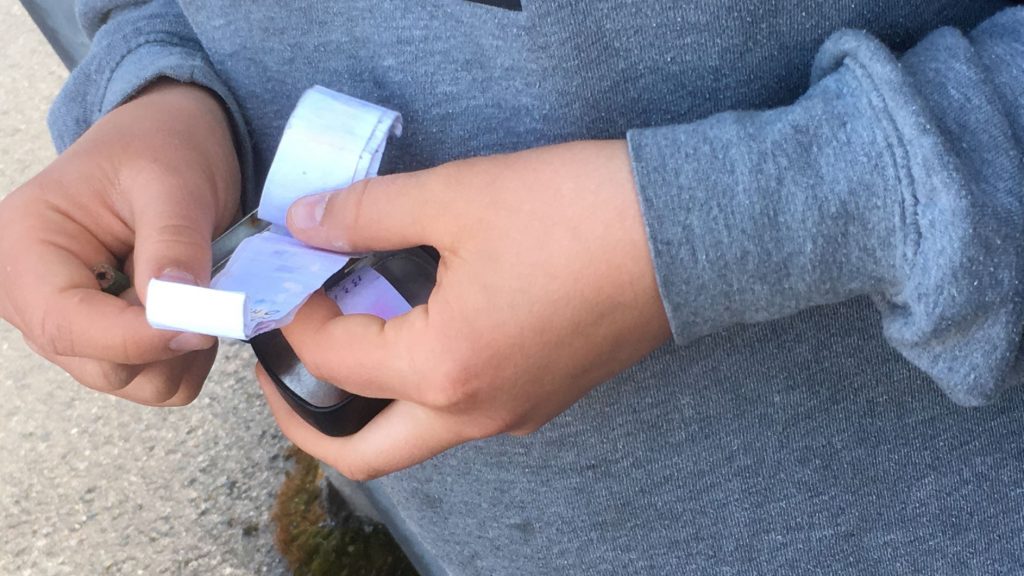
Is geocaching bad for the environment?
Geocaching community has some environmental initiatives and one of their basic principles is CITO, Cachers Improve The Outdoors. They also organize events for picking trash. In reality this needs more attention, because not only cache sites in the forest are very wearing for the ground and trails get created near the caches, but I often see trashes near caches. This is upsetting, because if you know the rules of geocaching, you should know not to leave any trash in the nature. But there are idiots among geocachers just like there are among hikers.
Another point open for criticism is the use of car in geocaching. I mentioned earlier that I prefer geocaches in the nature, which means walking along nature trails and finding geocaches along the way. I admit that to get to the nature trails I often use my own car. Some geocaches are also easy to pick up by car due to their location close to the road, and this diminishes the positive effect that geocaching has for spending more time in the nature. It may also encourage people to drive around more.
I have noticed that when I’m geocaching on a nature trail, I pay less attention to my surroundings as I have my phone in my hand and I’m looking at the map. In my opinion geocaching decreases nature connectedness if there are too many caches along the trail. But if it gets people to go to the nature and they otherwise wouldn’t, it’s better than nothing.
Warning: You might get hooked
Geocaching website lists all geocaches you have found as well as many other statistics for each user. There are also achievements such as being the first one to find the cache (FTF = First To Find). There are people who have thousands of finds on their belt. When we hid our first geocache together with our course teacher and other participants, the cache was published few days later late in the evening by the admins. Someone went and found it on the same night. I think it’s safe to say that that person is hooked on geocaching.
Have you got hooked or tried geocaching yet?
